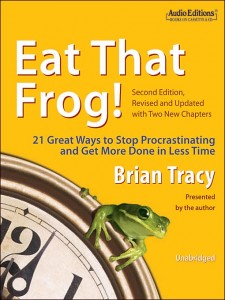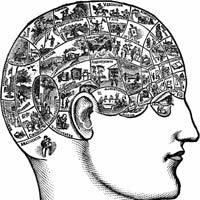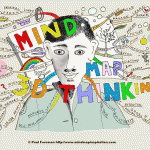Procrastination be gone! Use written goals.
You’ve decided to be more creative, and you want to do something about it; maybe read more books on a variety of topic unknown to you in order to broaden your horizons. Or maybe it’s to travel more, learn how to sketch, pick up a new language (human or programming), etc… Whatever your goals are, you are very motivated to achieve them… the first day or maybe the first week and then procrastination sets in.
According to Brian Tracy in his best-selling book Eat That Frog!: 21 Great Ways to Stop Procrastinating and Get More Done in Less Time, you need written goals.
Brian Tracy claims that only about 3 percent of adults have clear, written goals. These people accomplish five or ten times as much as people of equal or better education and ability but who, for whatever reason, have never taken the time to write out exactly what they want.
There is a powerful formula for setting and achieving goals that you can use for the rest of your life. It consists of seven simple steps. Any one of these steps can double and triple your productivity if you are not currently using it.
7 steps of the formula
- Decide exactly what you want. Either decide for yourself or sit down with your boss and discuss your goals and objectives until you are crystal clear about what is expected of you and in what order of priority.
- Write it down. Think on paper. When you write down a goal, you crystallize it and give it tangible form. You create something that you can touch and see. On the other hand, a goal or objective that is not in writing is merely a wish or a fantasy. It has no energy behind it.
- Set a deadline on your goal; set sub deadlines if necessary. A goal or decision without a deadline has no urgency. It has no real beginning or end. Without a definite deadline, you will naturally procrastinate and get very little done.
- Make a list of everything that you can think of that you are going to have to do to achieve your goal. As you think of new activities, add them to your list. Keep building your list until it is complete. A list gives you a visual picture of the larger task or objective. It gives you a track to run on.
- Organize the list into a plan. Organize your list by priority and sequence. Take a few minutes to decide what you need to do first and what you can do later. With a written goal and an organized plan of action, you will be far more productive and efficient than people who are carrying their goals around in their minds.
- Take action on your plan immediately. Do something. Do anything. An average plan vigorously executed is far better than a brilliant plan on which nothing is done.
- Resolve to do something every single day that moves you toward your major goal. Build this activity into your daily schedule. You may decide to read a specific number of pages on a key subject. You may call on a specific number of prospects or customers. You may engage in a specific period of physical exercise. Whatever it is, you must never miss a day.
Keep pushing forward. Once you start moving, keep moving. Don’t stop. This decision, this discipline alone, can dramatically increase your speed of goal accomplishment and boost your personal productivity.








